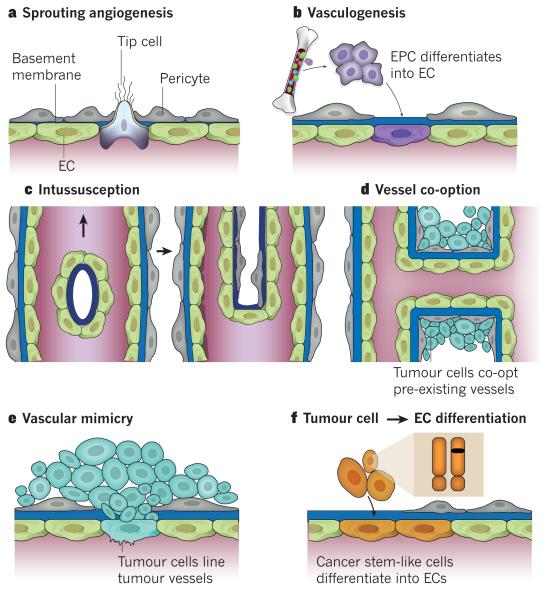Figure 1. Modes of vessel formation.
There are several known methods of blood vessel formation in normal tissues and tumours. a–c, Vessel formation can occur by sprouting angiogenesis (a), by the recruitment of bone-marrow-derived and/or vascular-wall-resident endothelial progenitor cells (EPCs) that differentiate into endothelial cells (ECs; b), or by a process of vessel splitting known as intussusception (c). d–f, Tumour cells can co-opt pre-existing vessels (d), or tumour vessels can be lined by tumour cells (vascular mimicry; e) or by endothelial cells, with cytogenetic abnormalities in their chromosomes, derived from putative cancer stem cells (f). Unlike normal tissues, which use sprouting angiogenesis, vasculogenesis and intussusception (a–c), tumours can use all six modes of vessel formation (a–f).

